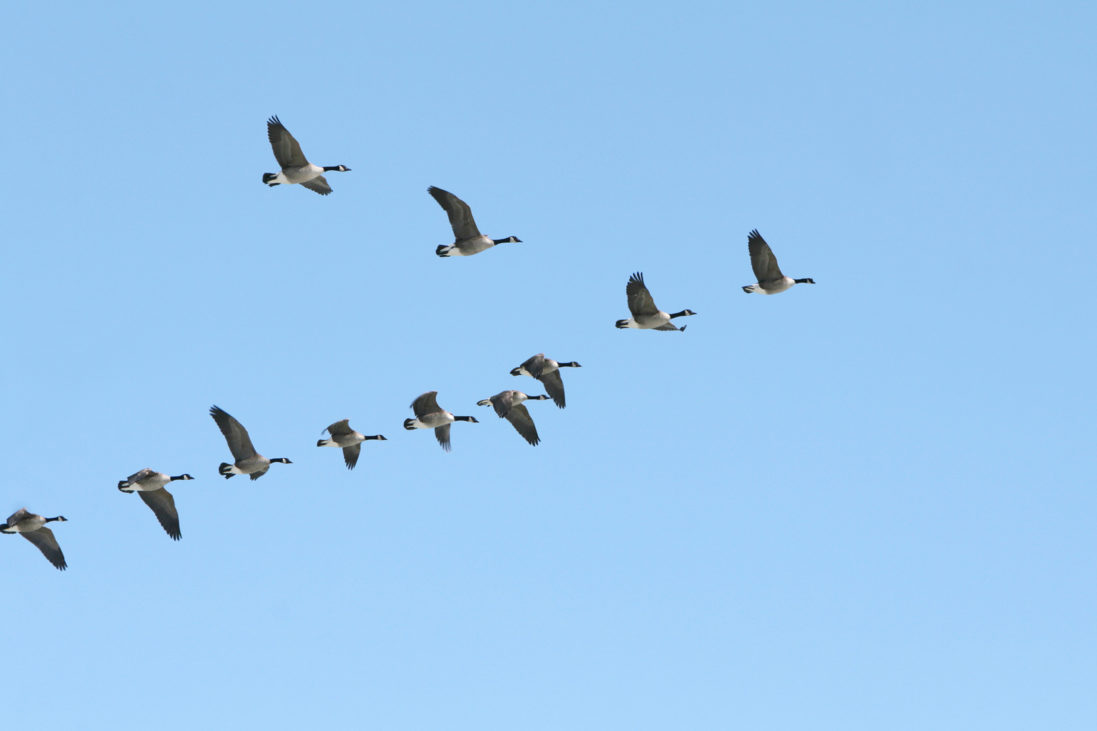
Reduce Your Risk of Bird, Wildlife Collisions
Updated Aug. 9, 2021
The first bird strike occurred in 1905; today, the FAA receives more than 10,000 reports of bird and wildlife strikes each year, yet it is estimated that this only represents 50% of all strikes that occur. At a projected average cost of $196 million to civil aviation alone each year, this is not a problem to be taken lightly. Worldwide, over 293 people have lost their life due to wildlife strikes since 1988.
The FAA and USDA have been working to gather as much information as possible about wildlife strikes. The primary source of information is pilots who encounter wildlife, file bird strike reports, and send in collected samples. Composed data helps determine many things, including migratory patterns and high risk areas. Over 96% of wildlife strikes involve birds, so this is where most research and resources have been concentrated. All wildlife strikes should be reported to the Wildlife Strike Database at http://wildlife.faa.gov.
Sending samples from bird strikes to the Smithsonian Institute for identification allows scientists to, among other things, track migration patterns and trends. The USDA and Smithsonian Institution partnered to produce a video that provides guidance for safely and properly collecting avian samples and reporting wildlife strikes, Strike Snarge, & Safety: Your Guide to Wildlife Strike Reporting. Flight departments are highly encouraged to report all bird/wildlife strikes and to keep a Bird Strike Sample Collection Kit. This collection kit includes:
- Resealable plastic bags of various sizes
- Prepackaged Alcohol wipes/ spray bottle with alcohol
- Permanent marker
- Paper or cloth wipes
- DNA Collection Card & Sterile Applicators
- Personal safety items including:
- Latex gloves
- Hand sanitizer
- Protective eye wear
- Face masks
How to Reduce the Risk of Wildlife Strikes
The two systems most commonly used for wildlife strike risk assessment are the U.S. Air Force’s Bird Avoidance Model (BAM) and the Avian Research Laboratory’s Avian Hazard Advisory System (AHAS). BAM is a strategic risk assessment tool that combines data collected over the last 30 years from 10,000 locations on 50 different species of birds. It then derives an estimated bird strike risk assessment for a selected route, biweekly period, or time of day. AHAS is a tactical risk assessment tool that uses data from BAM, weather radar, historical bird strike records, and the average mass of birds, which is tracked in an FAA database, to present a standardized measure of risk for low level routes in a particular area.
Although wildlife strike prevention is most effectively accomplished on the ground, experts say there are some precautions that operators can take:
- Be vigilant during takeoff: Of reported strikes with turbine powered aircraft, 93 percent occur at less than 500 feet AGL; 90 percent of strikes occur at or below 100 feet AGL. Above 500 feet AGL, the risk of a bird strike declines 32 percent for every 1,000 feet. If you observe birds/wildlife on or near the airport, report what you see to ATC as soon as possible.
- Keep departure airspeed at or below 250 knots at altitudes below 10,000 feet: The kinetic energy of a bird is 31 percent greater at 300 knots than at 250 knots. Some experts suggest maximizing climb rate through 3,500 feet, especially at night and in the months of April to May and September through November (normal migration season).
- Increase the visibility of your aircraft: Although there is no definitive data, experts say that it can’t hurt to make the aircraft as visible as possible. For example, keep exterior lights on when in the airport environment.
- Report all wildlife strikes (even near misses) and familiarize yourself with the FAA’s Online Strike Database: A recent proposed rule by the FAA to prevent public access to its wildlife strike database was struck down, and the web site is now more user-friendly than ever, with a wealth of information, research and news.
- NBAA’s Safety Committee has a Bird Strike Working Group (BSWG) dedicated to reducing the bird/wildlife strike hazard to Business aviation. If you have problems, questions, or comments about bird/wildlife hazards, please contact the committee or BSWG.


 International Business Aviation Council Ltd.
International Business Aviation Council Ltd.